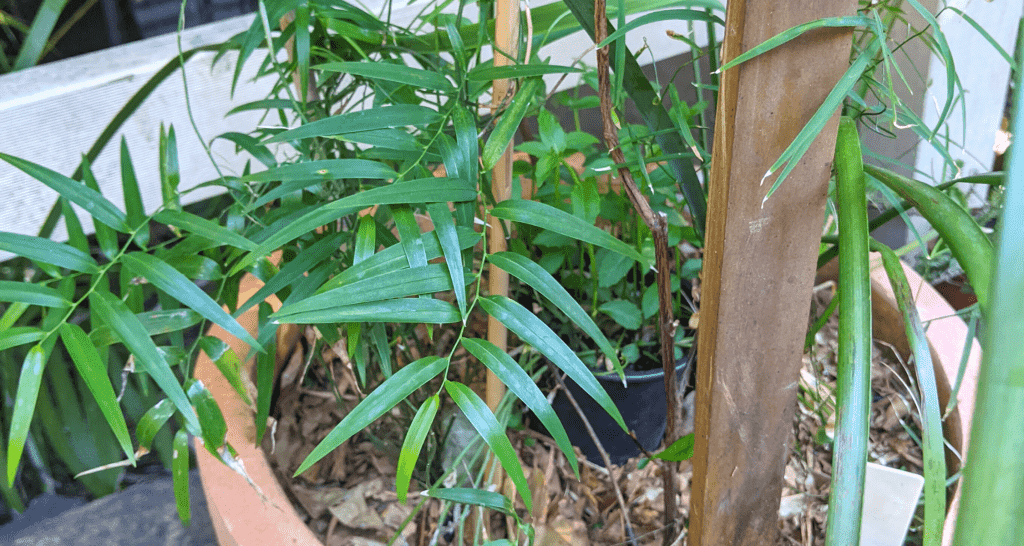Words by Tigerlily Boyce
From rainforest to wetlands, creating mini ecosystem pot plants is a great way to provide habitat, food and shelter for an array of wildlife in small areas, such as a balcony or patio. They also double as a wonderful garden feature!
The technique draws on concepts of ‘lasagne planting’, by combining plants with differing root depths in one large pot plant. This mimics the layers of a forest – from the deep roots of the canopy species to the shallow root systems of ground covers – and just like the forest, and depending on the size of your pot, the different stories of your pot plant will cater to different organisms; from insects, to lizards, to birds, bats and more!



Choosing plants that grow together in nature will make for easy care. We have a few examples of different mini ecosystems to get
you started. The first is a rainforest pot; a canopy of Castanospermum australe (blackbean), Syzygium oleosum (blue lilly-pilly) as the mid-story, and a carpet of Viola hederacea (native violet) charmingly spilling over the edge of the pot. This pot has been established for almost 1 year, in full sun and needs watering only every few days when the soil starts to feel dry. The addition of bark mulch helps to keep the moisture in the soil and prevents it from becoming hydrophobic (water-repelling).
The second mini-ecosystem is an open forest or sclerophyll pot, which is situated in the wandering sun. Dodonaea triquetra common/large leaf hop bush) as the canopy, which is a small tree with attractive foliage, Lomandra longifolia as mid-story, Eustrephus latifolius (wombat berry) and Geitonoplesium cymosum (scrambling lily) which can climb amongst your other plants without smothering them, and Lobelia purpurascens (white root) as ground cover. The terracotta pot not only looks great, but it helps the soil to stay aerated, warm, and prevent the soil from staying too wet (which is a problem in my garden).


You can even create a wetland in a pot, using varieties of Melaleuca, Leptospermum or Banksia which can tolerate moist soil. You may not
even need a canopy species, as some wetland sedges and rushes will enjoy full sun. Consider Philydrum lanuginosum (frogsmouth), Crinum pedunculatum (river lily), Carex appressa (tall sedge) and Mazus pumilio (swamp mazus). Wetland pot plants can be constructed using a pot with a tray or saucer to collect the water and remain moist – always check how much water is in the saucer or how dry the soil is between watering as some wetland plants still like “well drained” soil!
Get creative with your designs! There are endless possible combinations of plants and configurations; try sitting smaller pots on the topsoil of larger ones, like a cascade, to create different conditions and microclimates, or even just to make more space. This may also look stunning with trailing plants. Maybe have the focus be on which wildlife you’d like to attract – create a container of grassland species to attract small birds, a pollinator pot filled with flowers, or incorporate a frog hotel into your wetland pot.
Tag us in some of your photos of your designs and innovations, as well as what creatures you find; we love seeing what other gardeners for wildlife get up to and what creative ways they attract wildlife to their garden
Tag us at #gardensforwildlife @gardensforwildlifesunshinecoast on Facebook, and #gardensforwildlife and @barunglandcare on Instragram.
Happy gardening for wildlife!

